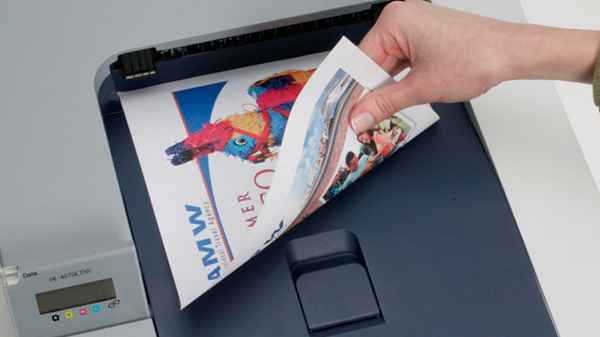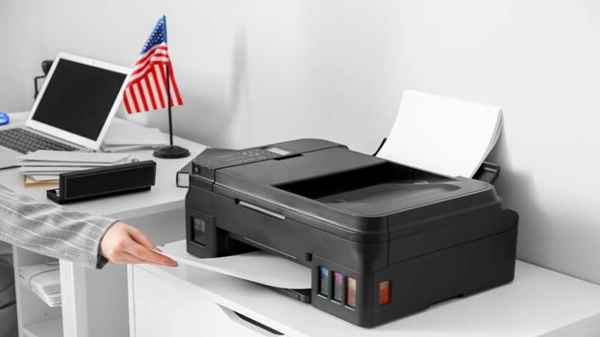In the realm of printing, the term “collate” holds significant importance, especially in the context of efficiently organizing documents. Whether you’re a novice or an experienced print user, grasping the concept of collation enhances your printing experience and ensures the seamless arrangement of your materials. This comprehensive guide aims to demystify the intricacies of collation, shedding light on its meaning, significance, and practical implications in the printing domain.
What Does Collate Mean When Printing?

Defining Collation
Collation, in the realm of printing, refers to the process of arranging multiple copies of a document in a specific order. This arrangement can involve sorting pages, sheets, or sets of documents according to predetermined criteria. Essentially, collating ensures that printed materials are organized in a sequential or logical manner, facilitating ease of reference and comprehension.
The Significance of Collation
Collation plays a crucial role in various printing tasks, ranging from mundane office documents to complex publishing projects. By accurately collating printed materials, individuals and businesses can streamline workflows, enhance productivity, and minimize errors. Moreover, collation is instrumental in ensuring the coherence and integrity of printed documents, particularly in settings where accuracy and precision are paramount.
How Collation Works
The process of collation typically occurs during the printing phase, either manually or through automated mechanisms. In manual collation, individuals physically arrange printed pages or sets according to the desired sequence. This method offers flexibility but may be time-consuming, especially for large-scale printing jobs.
Alternatively, modern printing technologies often incorporate automated collation features, wherein printers automatically arrange printed materials according to predefined parameters. Such automation not only accelerates the printing process but also reduces the likelihood of errors associated with manual collation.
Exploring Collation Methods
Sequential Collation
Sequential collation involves arranging printed materials in consecutive order, following the natural progression of pages or sets. For example, in a multi-page document, sequential collation would organize pages in ascending order, starting from page one and ending with the final page.
Reverse Collation
Reverse collation, as the name suggests, entails arranging printed materials in the reverse order of their natural sequence. This method is particularly useful in scenarios where documents need to be assembled in a manner that facilitates folding or binding.
Group Collation
Group collation involves organizing printed materials into distinct sets or groups, each containing a specified number of pages or sheets. This method is commonly employed in the production of booklets, pamphlets, and other multi-page documents where page grouping is essential for assembly or distribution.
Practical Applications of Collation
Office Documents
In office environments, collation simplifies the process of printing multiple copies of reports, presentations, and other business documents. By ensuring that pages are correctly arranged, collation reduces the risk of confusion and promotes professionalism in document presentation.
Publishing Industry
In the publishing industry, where the production of books, magazines, and journals is commonplace, collation plays a pivotal role in maintaining the integrity and coherence of printed materials. Publishers rely on accurate collation to ensure that pages are correctly ordered, thereby preserving the intended narrative flow and readability of publications.
Marketing Collateral
For businesses engaged in marketing and advertising, collation is indispensable in the creation of promotional materials such as brochures, flyers, and catalogs. By organizing product information, images, and other content in a structured manner, collation enhances the effectiveness and visual appeal of marketing collateral.
Tips for Effective Collation

Plan Ahead
Before initiating the printing process, take time to plan the collation sequence based on the intended use of the printed materials. Consider factors such as document length, page orientation, and any specific requirements for assembly or distribution.
Utilize Software Tools
Take advantage of software applications and printing utilities that offer advanced collation features. Many modern printers come equipped with built-in collation settings, allowing users to automate the arrangement of printed materials with precision and efficiency.
Conduct Quality Checks
Once printing is complete, perform thorough quality checks to ensure that collation has been executed accurately. Verify that pages are arranged in the correct sequence and that there are no missing or duplicated sheets.
Conclusion
In summary, collation is a fundamental aspect of printing that encompasses the orderly arrangement of printed materials. Whether you’re producing office documents, publishing books, or creating marketing collateral, understanding the concept of collation is essential for optimizing printing workflows and achieving professional results. By implementing effective collation practices and leveraging advanced printing technologies, individuals and businesses can enhance productivity, minimize errors, and elevate the quality of printed output.
Read Also
- How To Get Free T-Mobile Hulu Subscription – Hulu Is Now Available on T-Mobile
- Hulu Error Code P-DEV320 [SOLVED]
- How To Fix Hulu Error Code RUNUNK13
- 15 Best Christian Movies on Hulu
- Hulu vs Netflix
- How Much is Hulu Without Ads
- Hulu Not Working on Smart TV? Here is How to Fix it!
- Guide For Troubleshooting Hulu Error 94

